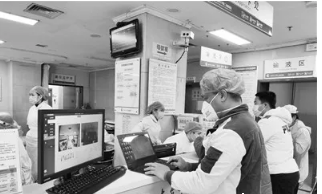What are the applications of gas sensors in medical devices?
The oxygen content of arterial blood in critically ill patients is an important indicator used by doctors to detect and evaluate the characteristics of living organisms.
At present, the most commonly used medical oxygen sensors are electrochemical, commonly known as oxygen batteries. After oxygen enters the sensor, the lead (Pb) contained in it is gradually oxidized to PbO2, and its life is only about 1 year. As an innovative alternative, a paramagnetic oxygen sensor is gradually being used. The process is more complicated and the price is higher, but it has a long life and is non-consumable. It can be used for a long time without replacement. In addition, if the blood oxygen saturation monitoring is carried out through a wearable device, it can avoid the complicated processes such as blood sampling and manual analysis in the laboratory. It is an effective method to achieve dynamic real-time information acquisition and monitoring, which can ensure accurate judgment of the condition. Timeliness, timeliness, and continuity of dynamic changes in blood oxygenation. With the use of oxygen sensors, there are also medical carbon dioxide sensors. Applications in epidemic prevention and control are more common, including ventilator, ambulance oxygen chamber, anesthetic, baby incubator, ICU ward, and inpatient isolation area environmental monitoring.

As a non-invasive, fast and cheap inspection method, the application of gas sensors in medical diagnosis and treatment is more important and widespread. For example measuring H. pylori (Hp). Hp can cause a variety of gastric diseases, including superficial gastritis, gastric ulcers, duodenal ulcers, non-ulcerative dyspepsia, and severe gastric cancer. By detecting the ppb level of carbon dioxide concentration in the exhaled emissions, it can be determined whether there is Hp infection and the quantification of the infection, etc. This is all done by a gas sensor.
In addition, suspected patient screening papers, reagent data, medical wearable products, large and small oxygen generators, medical robots, nursing robots, etc., as well as various experiments and laboratory tests; medical devices and monitoring equipment, and intelligent hospital environments There are undoubtedly a large number of sensors of different structure types used in the automation, intelligence and data informatization processes of medical equipment and equipment, and even the production of medical related products. The applications of sensors in medical treatment are countless and numerous.
In short, as the only functional device and information-based basic product of data collection, the sensor can quantitatively and accurately obtain all physiological parameters indicators such as blood glucose, blood lipid, blood oxygen, blood pressure, heartbeat, EEG, skin electricity, and body temperature that reflect health signs. In this epidemic, even the medical industry applications can be described as ubiquitous. People look forward to the different scenarios and outstanding problems presented by the epidemic prevention and control, and provide relevant companies with relevant technical information and innovative ideas, so that companies in the industry can take this opportunity to continue to innovate more organisms through cross-border integration and collaboration. Medical sensors to meet the country's timely needs for early warning detection and prevention and control monitoring of emergency emergencies.
If you want to know more, our website has product specifications for gas sensors, you can go to ALLICDATA ELECTRONICS LIMITED to get more information

